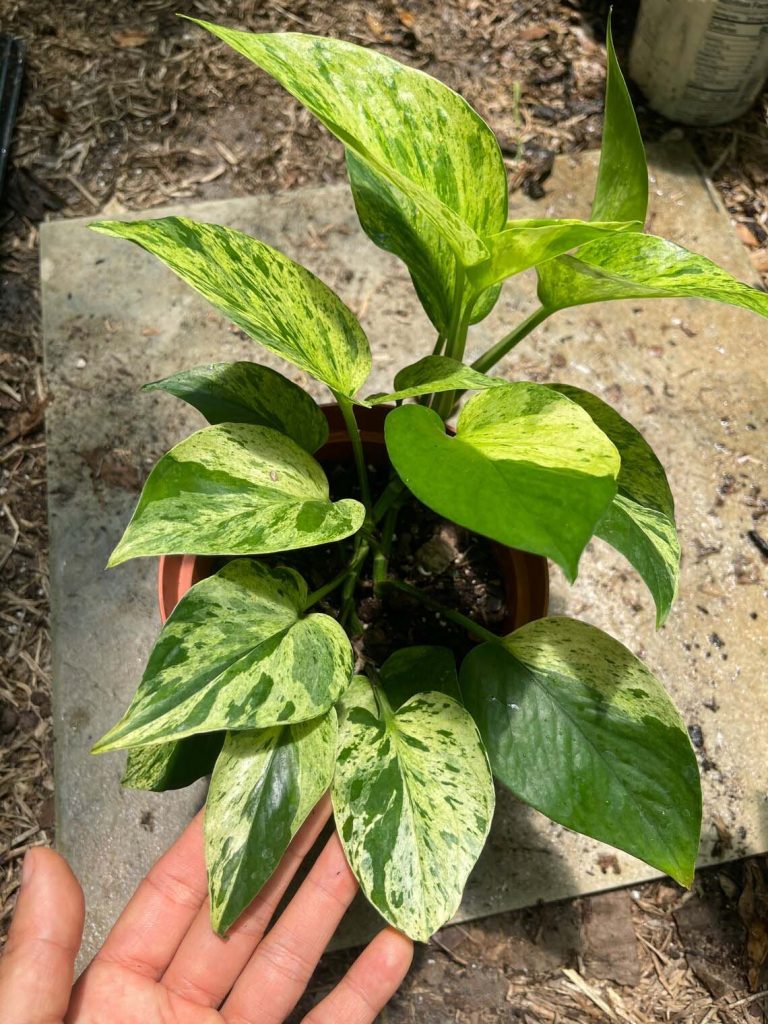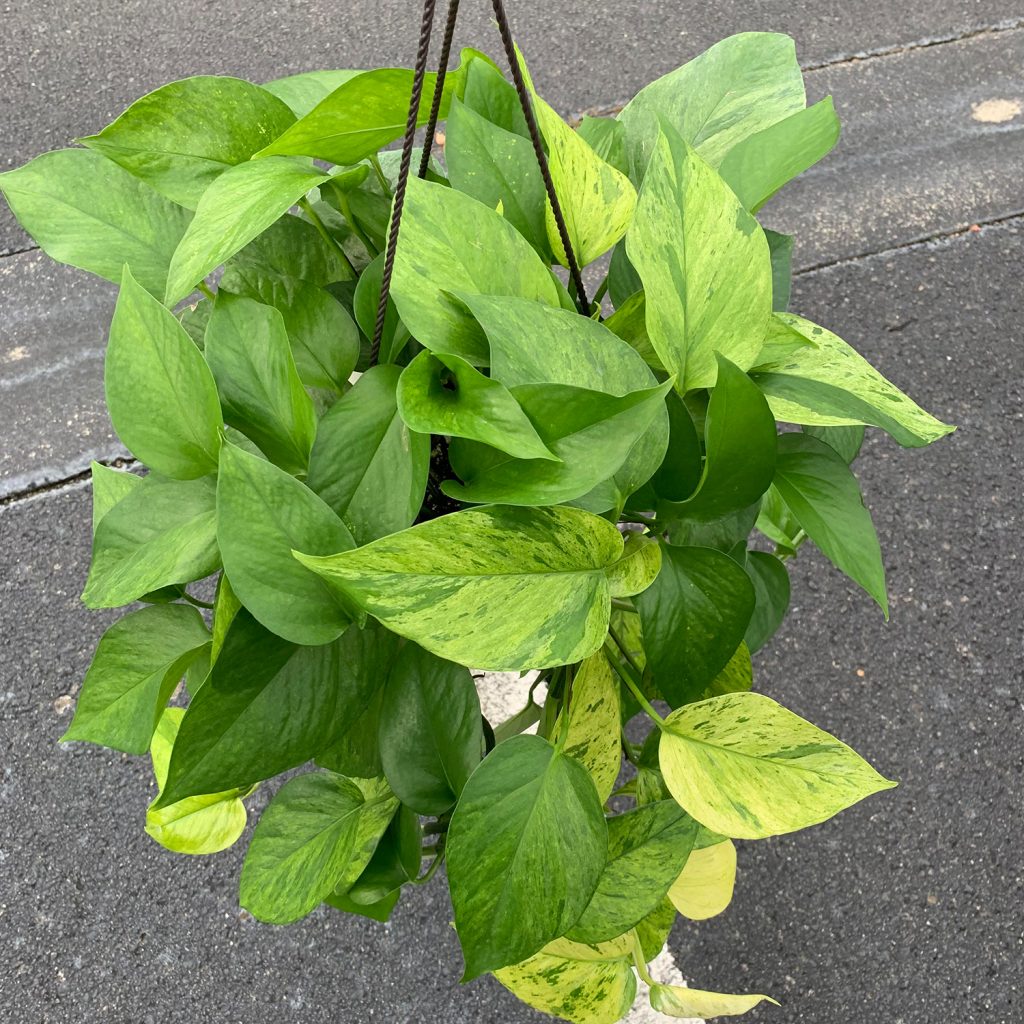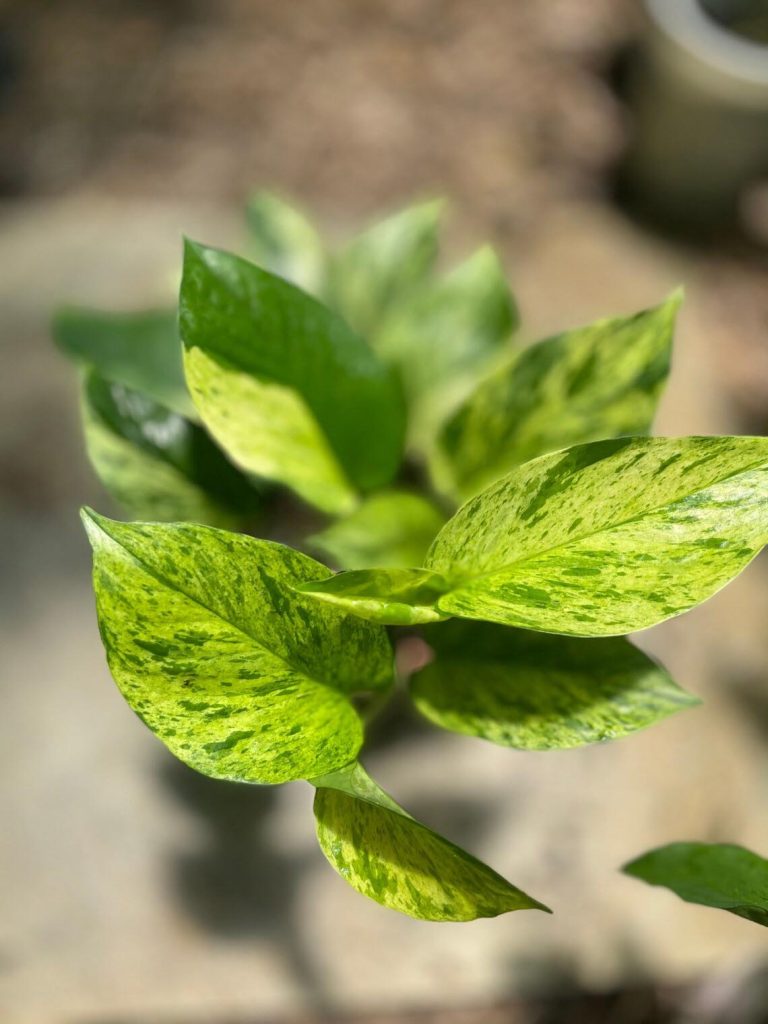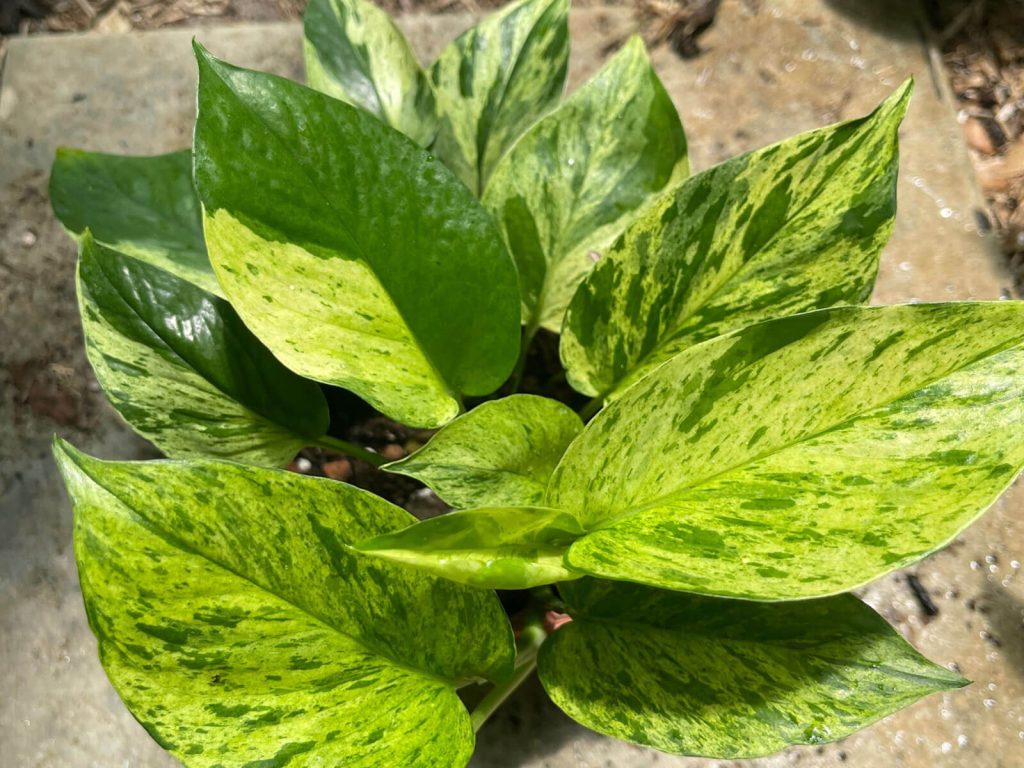Jessenia pothos is one of the rare types of pothos and lots easy to propagate and care for. Jessenia pothos can grow indoors and outdoors, it is a tropical vine with variegated lime green with dark green leaves. Just like every other pothos plant, growing it indoors is convenient for its growth, and it is known for being hardy.
Many gardeners have been discovered to put their priced Jessenia pothos indoors but don’t expect them to flower indoors. This plant has lots of interesting attributes that made it stand out compared to other pothos plants, although it’s a new variety, it’s one you definitely want to add to your collection.
One of the features of the Jessenia pothos plant is that it will easily adapt to any environment.
Pothos plants are generally popular houseplants and the Jessenia pothos has only been introduced to the group recently, it is characterized by heart-shaped green and a limey green variegation.
If you are new to the world of plants or pothos, learning how to identify, care and propagate is of dire importance. Jessenia pothos is sought out by every plant’s enthusiast and collectors, it is also a stable sport of the Marble Queen.

What is Jessenia Pothos And Its Characteristics
Pothos plants come in different colors and growing habits, some are very similar to each other.
Jessenia pothos is a distinct and rare type of pothos, its light and dark green foliage makes it stand out, and it is a hardy plant that will adapt to many different environments.
Jessenia pothos was introduced by the Costa Farm in 2014 as a sport of the marble queen pothos, but it has gone ahead to be one of the most sought-after pothos varieties now. Here is the quick information and care guide for Jessenia Pothos.
| Botanical name | Epipremnum Aureum ‘jessenia’ |
| Plant Type | Perennial evergreen vine, tropical |
| Family | Araceae |
| Sun Exposure | Partial |
| Soil Type | Moist but well drained |
| Temperature | 18 °C to 23 °C (65-75 °F). |
| Growth Rate | Moderate |
| Toxicity | Toxic to pets |
| Propagation Style | Indoor and Outdoor propagation |
| Food | Balanced plant feed in spring and summer monthly |
| Humidity | 50% to 70% |
| Foliage color | Green heart-shaped leaves marked with chartreuse |
| Bloom time | Spring, summer |
| Flower color | Green, white |
| Common Plant Issues | Root rot from overwatering, common houseplant pests such as mealybugs, scale, spider mites, and thrips |
How to Propagate Jessenia Pothos
Jessenia pothos happens to stand out due to its lime-green variegated leaves hence you might want to keep it from dying and one way to ensure you always have this plant is to propagate it. You can easily propagate pothos plants in the spring or summer using root cuttings.
Pothos can not be propagated using a leaf or its petiole. Luckily, it is very easy to propagate during their active growing period, and below are steps to guide you.

- Take a pair of scissors and cut a stem from jessenia pothos mother plant, get a strong plant that is 6 to 8 inches long
- The best time to take these cuttings is when you prune the plant, remove two or three of the leaves from the tip of the plant
- Ensure at least two root nodes on the cutting
- Place the cuttings in a glass of clean water or well-draining soil for a few weeks, and it will be ready to put in a new pot in no time
- Change the water when it starts to get murky or smelly, roots should start to grow after a few weeks and when it is several inches long, replant in a new pot.
Note: When propagating jessenia pothos, it is best to stick with one medium to propagate. This means if you have it propagated in water from the beginning, switching to soil might cause the plant not to do well.
Jessenia Pothos Care Guide
Jessenia pothos is a gorgeous plant and if cared for properly, it will further add to the beauty of any home decor, and it can also help remove harmful toxins from the air such as formaldehyde.
Jessenia plant is not a complicated one to grow, even beginners can grow this pothos variety successfully. Jessenia pothos tends to be a slower grower compared to other types of pothos plants and here is an ultimate guide on how to care for it.
1. Watering
Watering is an important aspect for every pothos plant and jessenia is not an exception.
You have to be careful not to overwater jessenia pothos, it is a low-maintenance plant, so you do not have to water it more than necessary. Put your finger into the soil to check if it is dry and needs some water, this will help prevent overwatering.
Water jessenia pothos once 2 to 3 inches of the top dries out however they are relatively drought tolerant, so they will survive the occasional missed watering. Also, cut back on watering during the fall and winter, if the soil feels like there is still moisture then wait for it to dry.
2. Soil Need And Transplanting
Jessenia pothos will technically do well with a soil mixture that retains some water while also being well-drained not to cause any root rot.
This pothos plant does not like sitting in wet soil, so it will survive in pure potting soil for a while when transplanting, you should also use a well-draining potting mix.
After transplanting jessenia pothos, add a handful of perlites around it, you can also include some orchid bark mix, this should help improve drainage and prevent soil compaction. Water the plant a day before repotting and ensure to pick a pot with drainage holes.

3. Temperature And Humidity
Jessenia pothos plant is native to rainforest climates, and it also grows wild in tropical jungles hence it does best in humid and warm conditions. This pothos plant can grow in places with low humidity and temperatures have to be between 65 and 75 degrees Fahrenheit but note that they are not frost tolerant.
Provide it with 50% to 70% percent of humidity, and you can highly mist the leaves once or twice a week to keep the plant hydrated. Jessenia will die even if it’s exposed to a light frost so keep a close eye on it especially if it is planted outdoors during chilly spring or fall.
4. Fertilizer
Some varieties of pothos will thrive without any fertilizer and jessenia pothos will do great too.
However, to ensure proper growth of this pothos plant, provide it with regular fertilization during the active growing month. Water soluble fertilizer is a great choice for it, you can easily fertilize it while you water.
This pothos plant does not need to be fertilized all year round, so you can stop fertilizing during the fall and winter months. Apply a well-balanced liquid fertilizer once a month to supply nutrients to your jessenia pothos plant.
5. Pruning
If you are going to be planting jessenia pothos indoors then you might want to control its growth.
Pruning is not entirely necessary for jessenia planted outdoors but to encourage fuller growth, prune in spring or summer when the plant is actively growing.
Get a pair of pruning shears or scissors, sterilize properly before using and snip the vines that are too long.
Common Pests And Diseases Problem With Jessenia Pothos
When you have plants like jessenia pothos in your collection, you have to be aware of the common pests and diseases that can plague them and learn how to prevent them as well.
Jessenia plants are susceptible to common houseplants such as spider mites, thrips, and mealybugs, and the scale and disease to watch out for is root rot.
However, no reason to panic, jessenia is resistant to most pests and diseases but if there is any sign of infestation, quarantine the plant, so it does not spread. You can take care of any pests and disease infestation with insecticidal soap or neem oil. Treat every 7 to 10 days.
Wrapping Up
The stem-cutting method is the perfect and easiest way to propagate jessenia plant, and you can technically root cuttings at any time of the year.
Jessenia pothos is a long-lived plant, it can grow for more than 10 years which makes it just the perfect houseplant for busy plant parents.
To identify jessenia pothos, simply look out for a color pattern that sets it apart from other varieties, it has dark green heart-shaped leaves with chartreuse mottling which are evenly distributed in tiny flecks all over the leaves.
More pothos guides on TheHomeTome:
- How to Get Rid Of Brown Spots On Pothos Plants
- Jade Pothos: How To Care And Propagate Jade Pothos
- Variegated Neon Pothos: Care And Propagation Guide
- How To Prune Pothos Plants The Right Way
- How To Make Pothos Grow Faster (9 Tips For Growers)
- How To Train Pothos Plants To Climb (9 Tips For Growers)
- Hawaiian Pothos vs Golden Pothos: What’s The Difference?
- Emerald Pothos Care Guide (How to Grow)

